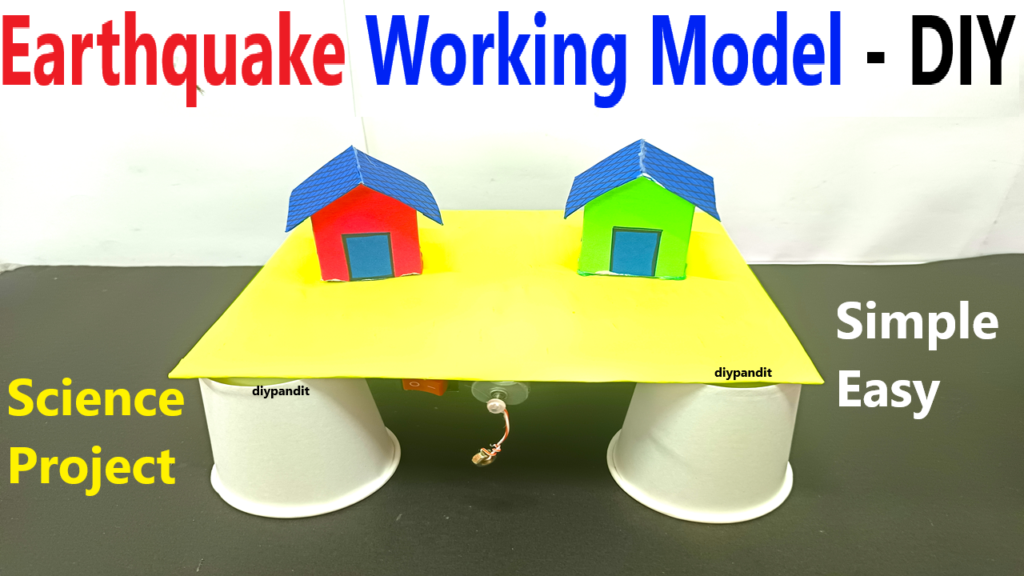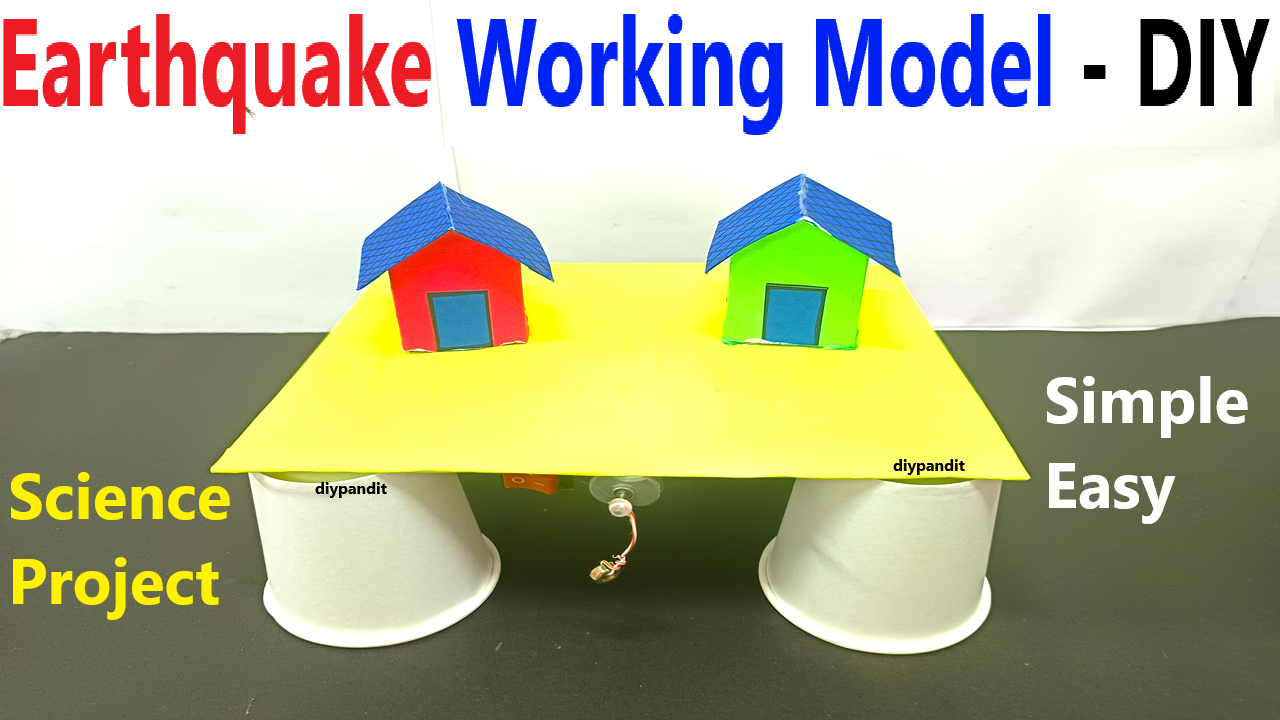Here’s a step-by-step guide to building an earthquake working model using cardboard, color paper, a DC motor, 9V battery, switch, and paper cups.

This model simulates how houses fall during an earthquake due to vibrations.
Materials Needed:
- Cardboard sheet – for the base and platform
- Color paper – to create houses
- Paper cups – to act as unstable foundations for the houses
- DC motor – to create vibrations
- 9V battery – to power the motor
- Battery clip and wires – to connect the motor
- Switch – to control the motor
- Double-sided tape or glue – for assembling houses
- Scissors and cutter – to cut cardboard and paper
- Hot glue or tape – to secure the components
- Small nuts/weights – to attach to the motor shaft (for stronger vibrations)
Steps to Build the Model:
Step 1: Prepare the Cardboard Base
- Cut a large piece of cardboard (about 30cm x 30cm) to serve as the platform where the earthquake will be simulated.
- Make small platforms (10cm x 10cm) from cardboard and glue 3-4 paper cups under each platform to act as weak foundations.
Step 2: Create the Houses with Color Paper
- Use color paper to make small houses by folding paper into rectangular or box shapes (simple cube models).
- Decorate the houses with doors, windows, and roofs using color markers or extra paper.
Step 3: Mount the Houses on Paper Cup Platforms
- Attach the paper houses onto the cardboard platforms with a little bit of glue or tape (avoid making them too secure, so they fall during the vibration).
- Place the platforms (with houses) on the paper cups to simulate a weak foundation.
Step 4: Set up the Vibrator (DC Motor System)
- Attach a small nut or weight to the shaft of the DC motor. This creates imbalance and vibrations when the motor runs.
- Use hot glue or tape to fix the motor securely on the cardboard base.
Step 5: Wire the Motor to the Battery and Switch
- Connect the 9V battery to the DC motor using wires.
- Insert a switch between one of the wires to control the motor’s power.
- Secure the battery and switch onto the base with tape or glue.
Step 6: Test the Vibration
- Switch on the motor and check if it produces enough vibration to shake the base. The added weight on the motor shaft will make the platform vibrate more strongly.
Step 7: Place the House Platforms on the Base
- Arrange the paper cup platforms (with houses) on the vibrating cardboard base. The platforms should be placed loosely, so they can fall or collapse during vibration.
How the Model Works:
- When you turn on the motor, the uneven weight on the motor shaft creates vibrations, similar to seismic waves during an earthquake.
- These vibrations travel through the cardboard base and cause the houses on the paper cup foundations to wobble and collapse, demonstrating the effect of weak foundations during an earthquake.
- The switch allows you to control the earthquake’s duration and intensity.
Summary:
This model shows how earthquakes affect poorly built structures, especially those on weak foundations. The DC motor mimics seismic waves, and the houses on unstable paper cups demonstrate how buildings can collapse due to shaking. This is a simple, fun, and effective way to understand the impact of earthquakes and the importance of strong foundations.

